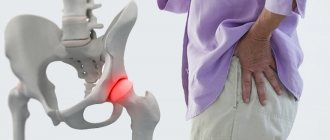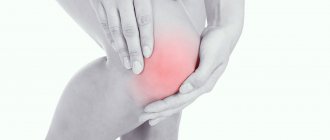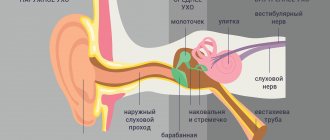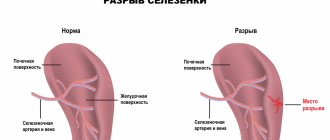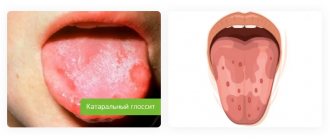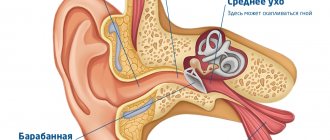Pain, numbness, burning muscle in the thigh area is one of the common symptoms of diseases of the spine, femur and muscles, and pelvis. At the Yusupov Hospital, doctors identify the cause of muscle pain in the thigh using modern examination methods. Comprehensive diagnostics allows you to timely determine the cause and stop the disease.
All conditions have been created for the treatment of patients:
- Chambers of European comfort level;
- The use of the latest drugs with a minimal range of side effects;
- Innovative methods of rehabilitation therapy.
Doctors take an individual approach to choosing a treatment method for each patient. Professors and doctors of the highest category discuss all cases of severe pain in the thigh muscle at a meeting of the expert council and make a collegial decision regarding further tactics for managing the patient.
Causes of hip pain
The causes of hip pain (as well as its nature) can be different. The hip may hurt on the side of the joint or in the soft tissues, and the discomfort can occur periodically and be intense, acute or chronic. Both the right and left hip can hurt; in addition, pain can be localized in the groin area.
At CELT you can get advice from a specialist algologist.
Make an appointment
Hip injuries
Hip injuries include:
- bruises of the pelvis, hip joint, upper thigh;
- fracture in the area of the trochanters of the femur;
- sacrum fracture;
- dislocations of the femur;
- sprains and tears of muscles and ligaments;
- fracture of the femoral neck;
- compression fracture of the 5th lumbar vertebra.
It is worth noting that rupture of the hip ligaments can occur not only due to injury, but also due to the emergence and development of degenerative processes in them. A rupture is characterized by acute pain and impaired joint mobility.
Osteoarthritis of the hip joint
Coxarthrosis, or arthrosis of the hip joint, is a disease in which wear and tear occurs on the hip joint. It is one of the most common causes of pain in the right and/or left hip. A distinctive feature of this disease is pain localized in the groin and radiating down the lateral and anterior femoral surface. Often the sensations can be projected onto the buttock or radiate to the knee; they appear when walking or getting up from a chair. Other clinical manifestations of coxarthrosis include:
- significant limitation of mobility of the affected limb (inability to perform rotational movements, pull the leg towards the chest or move it to the side);
- crunch in the hip joint;
- shortening of the leg (appears in advanced stages of the disease).
More about coxarthrosis
Arthritis of the hip joint
There are a number of arthritis that can cause inflammation of the hip joints. Despite the fact that this phenomenon is quite rare, it exists and is mainly affected by people aged 15 to 40 years.
Painful symptoms are felt most strongly at night and their intensity is quite high. They do not subside even when changing body position. When walking, the pain subsides somewhat, and in the evening (after the patient has “dispersed”) they can completely disappear, but at night they will make themselves felt again.
Hip infarction – aseptic necrosis of the femoral head
Hip infarction - this is the diagnosis given to five percent of patients who complain of hip pain. This disease is characterized by rapid development; pain symptoms increase over 1–3 days and become almost unbearable at night. Their weakening is observed at 4–5 am. Men suffer from this disease 8 times more often than women.
Inflammation of the femoral tendons
This disease is diagnosed in 25–30% of the number of patients who come with complaints of pain symptoms. Most often, women suffer from this disease, and the peak incidence occurs during menopause, during which weakening of muscles and tendons is often observed. The development of the disease occurs rapidly - within a period of 3 to 15 days. The hip hurts on the side in the soft tissues along the outer surface, either on one side or on both. The discomfort is quite intense; they appear when walking or lying on the affected side. There is no limitation of movement in the hip joint.
More about trochanteritis
Piriformis syndrome
Another very common cause of hip pain is piriformis syndrome. It occurs during pathological processes in the lumbar spine and, as a rule, is one-sided. An increase in pain occurs within 1 to 3 days due to:
- stress;
- lifting weights;
- sudden unsuccessful movement.
The pain is localized in the gluteal and lumbar region, and the sacrum often hurts. Sometimes painful sensations descend along the back surface of the lower limb to the heel.
Other reasons
In addition, the hip can hurt inside or outside and for a number of other reasons:
- pathologies of the endocrine system, leading to the destruction of cartilage and bone tissue;
- pathology of arterial vessels;
- infectious processes in the bone tissues of the hip and pelvis;
- malignant bone tumors.
general description
Pain in the pelvis on the right or left is often complemented by an inflammatory process, pinching of the sciatic nerve or its irritation. In such a situation, the aching pain often spreads to the leg, thigh and buttocks. It becomes more pronounced during physical activity and when performing certain loads.
Painful sensations appear from the thigh and tailbone, spread to the muscles of the buttock, to the back of the thigh and calves, and radiate to the foot, without moving to the phalanges of the fingers. Pain is felt throughout the entire limb. Most often, this unpleasant symptom affects only one lower limb. In some cases, sciatica occurs on both limbs.
When pain occurs, especially if it lasts for a long time, the general condition of the body suffers, and a person’s gait changes. He tries to reduce the load on the diseased limb by transferring it to the healthy one. This is how lameness occurs.
Diagnosis of hip pain
The specialists of the CELT Pain Clinic, like no one else, know how important it is to correctly diagnose such clinical manifestations as hip pain. The similarity of symptoms requires differentiation of different diseases, which will result in the prescribing of effective treatment.
In addition to taking an anamnesis, an examination is carried out by one of the following specialists:
- neurologist;
- traumatologist-orthopedist;
- rheumatologist;
- surgeon;
- oncologist.
In addition, our Pain Clinic performs the following diagnostic tests:
- X-ray of the hip, pelvis, lumbar spine;
- Magnetic resonance imaging of the lumbosacral spine.
If necessary, laboratory tests may be prescribed.
Types of pain
Painful sensations while walking can vary in intensity and type. This is due to the provoking factor in the development of diseases, the individual pain threshold, and the stage of development of the disease.
Painful sensations can be severe or moderate. The nature of the pain is aching, sharp, stabbing, dull, pulling. When visiting a doctor, it is very important to establish the nature of this symptom; this will help to make a more accurate diagnosis and begin timely treatment.
The main types of unpleasant symptoms are:
- Acute pain. It is intense but short-lived. It is most pronounced in the pathologically changed area. In this case, the leg and buttock hurt slightly. Such pain is easier to cope with.
- Aching pain. In this case, the unpleasant sensations spread evenly throughout the entire limb, especially in those areas that are in close proximity to the damaged area. The pain can be aching and pulling, in this case diagnosis is difficult.
- Chronic pain. It is long lasting and is present over a long period. It is very difficult to get rid of it.
Treatment for hip pain
The specialists of the CELT Clinic will help you get rid of hip pain forever. To do this, they not only act on the pain syndrome, but eliminate its cause. Of course, in case of severe pain, efforts are initially aimed at eliminating it. The course of treatment prescribed directly depends on the pathology that caused the pain. Typically, these are conservative methods that include:
- exercise therapy;
- massage;
- manual therapy;
- systemic therapy.
In addition, a blockade of the hip joint can be performed, which can completely eliminate pain and reduce inflammation. At the same time, the risk of side effects is practically eliminated. In extreme cases, our specialists resort to surgical intervention.
Modern treatment methods, a large arsenal of medical equipment, knowledge and experience of doctors at the CELT Pain Clinic allow our patients to forget about pain forever!
Make an appointment through the application or by calling +7 +7 We work every day:
- Monday—Friday: 8.00—20.00
- Saturday: 8.00–18.00
- Sunday is a day off
The nearest metro and MCC stations to the clinic:
- Highway of Enthusiasts or Perovo
- Partisan
- Enthusiast Highway
Driving directions
Causes of pain not related to joints
There are many factors that provoke pain in the pelvis, which extends to the lower extremities. To carry out the correct therapy, it is necessary not only to establish a diagnosis, but also to determine the reason why it appeared. Provoking factors for the appearance of pain can be pathologies of the articular apparatus or internal organs, or there may be other reasons.
In the event that there are no degenerative-dystrophic changes in the joint apparatus, the following factors can cause pain:
- The period of bearing a child. Unpleasant symptoms in the pelvis and lower back are triggered by changes in the body, pressure from the uterus on the internal organs, and compression of the joints. Often women during this period of life suffer from aching pain that radiates to the limbs.
- Diseases of an inflammatory or infectious nature that affect soft tissues and nerve fibers. The pain is sharp or aching in nature.
- Obesity. In this case, the spine experiences increased stress, and unpleasant symptoms occur in the pelvis and lower back.
- Hypothermia. Against the background of hypothermia, diseases of the joint and bone apparatus often begin to develop.
- Tumor-like processes in the spinal column of a benign or malignant nature.
- Diseases of the muscular system.
- Diseases associated with metabolic disorders. These are diabetes mellitus, gout, rheumatism.
Pain in the lumbar or pelvic area, which radiates to the lower limb, can cause sciatica. This pathology is accompanied by pinching of the sciatic nerve. Sciatica can be caused by prolonged exposure to an uncomfortable position, constant sedentary work, or hypothermia. Spinal diseases can also provoke this problem.
Features of treatment
After identifying the cause, a specific treatment regimen is prescribed.
The following methods are used:
- Medications, including painkillers, vasodilators and anti-inflammatory drugs.
- Physiotherapy consists of magnetic therapy, phonophoresis and laser therapy.
- Therapeutic gymnastics are individually selected exercises that do not put stress on the joints.
Drug treatment
Treatment with medications is a complex administration of drugs of various types:
- Muscle relaxants that reduce spasms during pain symptoms.
- Anti-inflammatory drugs. Non-steroidal drugs include Idomethacin and Diclofenac. Steroids include Prednisolone and Cortisan.
- Drugs that improve microcirculation. They reduce hypoxic phenomena in the diseased area and reduce swelling.
- Diuretics can reduce swelling in the inflamed area.
After a medical prescription, treatment can be continued at home.
If you want to share your experience, you can do so in the comments.
Treatment of joints » Joint pain » Article publication date: 01/26/2016 Article update date: 12/06/2020
The content of the article:
Pain in the hip joint that radiates to the leg occurs due to injuries, inflammation of tendons and joints, infections, and also as a local manifestation of general diseases of the body.
At the initial stages of pathologies, when only intra-articular structures are destroyed or injured, pain sensations are localized in the joint itself. When the structures surrounding the joint (ligaments, muscles, nerve bundles) are involved in the pathological process, the pain spreads beyond the joint - this is how irradiation (“recoil”) appears in the leg.
The greatest danger of pathologies that cause such discomfort lies in their complications. In most cases, pain radiating to the leg occurs against the background of the following four changes:
- reducing the amount of joint lubrication,
- pathological changes in periarticular structures,
- lesions of the synovial membrane,
- damage to cartilage tissue.
These are dangerous conditions. Ignoring pain, which indicates pathology of the hip joint (abbreviated HJ), leads to disruption of its function or to its complete immobilization.
The good news: timely consultation with a doctor can stop the progression of the disease and eliminate (or greatly alleviate) discomfort in the joint and leg. Treatment of such pain (and its causes) is carried out by rheumatologists, traumatologists, orthopedists and neurologists - depending on the pathology - the cause of the problem.
Pain when walking
Before you begin to treat pain that occurs when walking, it is worth finding out why it appeared.
The following reasons may impair the functionality of the joints:
- Fracture of the femoral neck.
- Trauma with destruction of cartilage, bones and muscles.
- Bruises, sprains and dislocations.
- Inflammatory process in tissues.
- Tissue death due to poor blood circulation.
- Inflammatory process in the hip joint. This results in pain and limited mobility.
- Tendon inflammation.
- Bursitis.
- Hereditary predisposition.
- Elderly age.
It is important to start treatment immediately. Pain when walking can signal a developing pathology.
In this case, it is necessary to determine the nature of the painful symptom. Discomfort may occur after sleep and then go away during the day. Acute pathology appears in the hip area.
Night pain occurs when blood stagnates inside the muscles. Mechanical occurs after severe physical exertion.
Pain when the joint capsule is stretched occurs when walking and at rest. The nature of the pain depends on the type of pathology:
- With fractures, the pain becomes dull and aching.
- In the morning hours, a negative symptom manifests itself in joint pathologies.
- With osteochondrosis or neuralgia, the discomfort is aching in nature and occurs with sudden movements.
- With systemic pathologies, initial pain occurs that does not disappear when walking.
Evaluation of treatment effectiveness using MRI of the hip joint
After undergoing restorative manipulations, it is important to carry out repeated diagnostics to verify the correctness of the prescribed treatment course. The best way to compare the rate of tissue regeneration is MRI. If there are images from a previous study, the functional diagnostician compares the stage of the disease, identifies the absence or presence of relapses (tumors or infections affecting the pelvis), and migration of metastases.
After surgery, the composition of the fluid in the joint cavities and the degree of fiber restoration are examined. In some cases (with cancer of the bone), it is necessary to remove the hinge part of the hip and replace it with a prosthesis. The implant material is a metal alloy, so MRI scanning of the hip joint is contraindicated. An alternative is the same informative examination as a computer scan.
Hardware examination can be carried out in specialized diagnostic centers containing tomography rooms. You can select the nearest medical facility on the website of the Moscow Unified Recording Center. An expanded list of clinics makes it easier to compare by ratings, location addresses, and prices for services. Mark the best offers and sign up for diagnostics through the service. This will open access to additional discounts on the selected type of tomography.
Diagnosis of pathology
Pain can indicate a variety of diseases. Therefore, it is useless to relieve this symptom with tablets, ointments or manual therapy until its real cause is identified.
To determine the factor causing such discomfort, doctors use a variety of methods. First of all, this is, of course, a visual examination of the patient, palpation of the diseased area, as well as an oral questioning about the nature of the pain and accompanying symptoms. Based on this, the doctor draws conclusions about which examination methods are best prescribed to the patient.
- Causes of pain in the hip joint at night while lying on your side, accompanying symptoms
The most frequently prescribed examinations:
- General blood and urine tests. This research method allows you to check biological fluids for the number of bodies responsible for inflammation and pathogenic processes in the body.
- A group of blood tests for the various components contained in it. We are talking about a biochemical study, as well as checking the presence of various pathogenic bodies in the blood.
- X-ray diagnostics. This research method is the main one in diagnosing diseases associated with the musculoskeletal system. It allows you to examine the joint in detail for the presence of osteophyte damage.
- Taking rheumatic samples. Such a study allows you to accurately determine the presence or absence of rheumatism.
- Proteinogram.
- MRI and CT. These types of diagnostics allow you to examine the ligaments and muscles in detail and identify inflammation and other problems present in them.
- Checking the patency of blood vessels.
- Diagnosis of tendon reflux.
The type of diagnosis required in a particular case is chosen by the doctor. However, if a specialist suspects that the cause of discomfort does not lie in diseases of the bones and joints, he may prescribe other tests and examinations. For example, he will ask you to donate blood to determine the amount of sugar in it.
Diagnosis of the problem
It is very important to consult a doctor before starting treatment. Indeed, due to the wide range of possible causes of discomfort, it is impossible to independently determine the disease that caused it.
